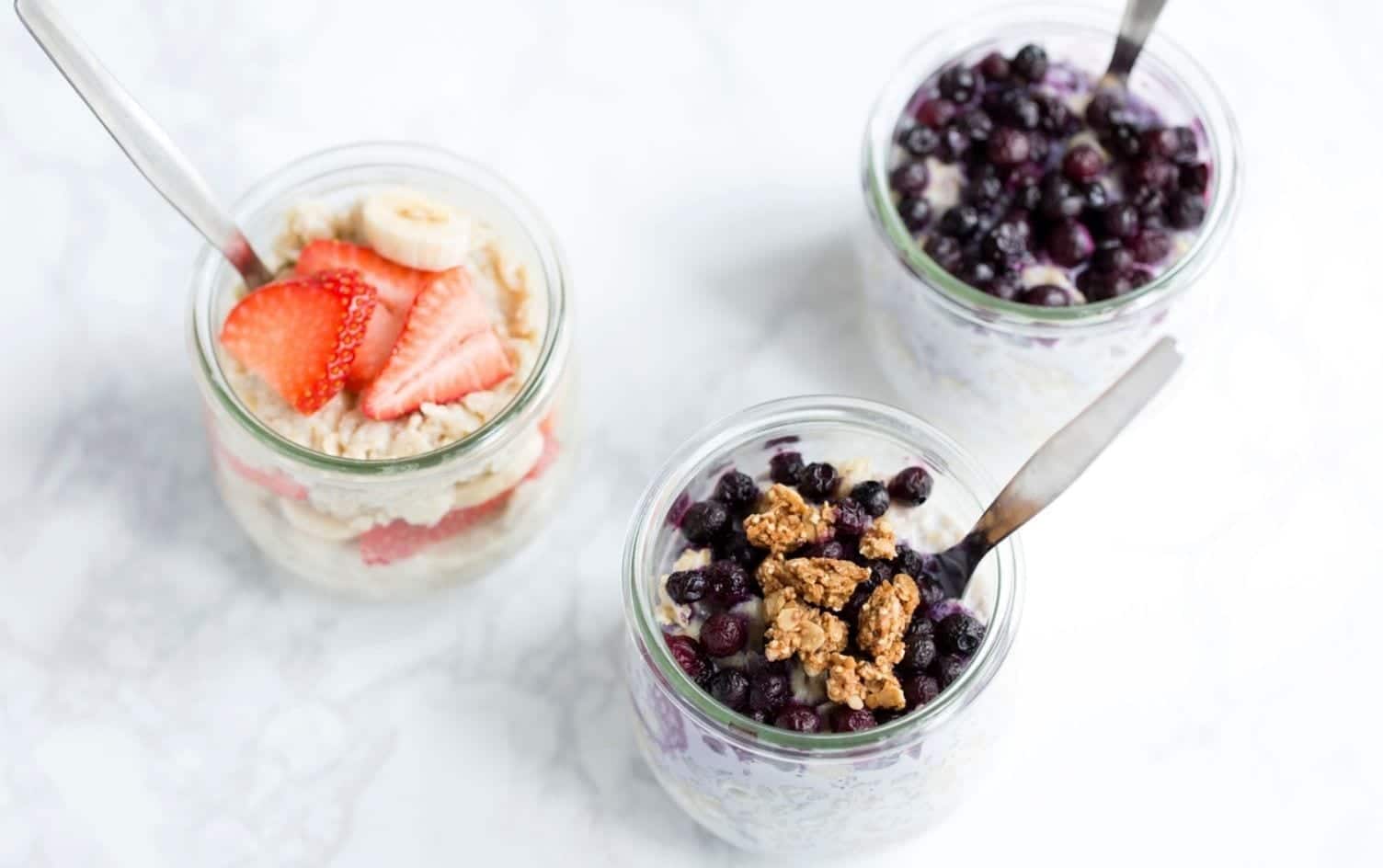The concept of intermittent fasting is relatively simple: You eat during certain hours and avoid eating during the rest. Research shows it may help with everything from gut health to weight loss, which in part explains why this eating approach is so popular. But when it’s time to start eating again, how do you break the fast?
One of the biggest intermittent fasting mistakes to avoid is overeating when you break your fast, which can derail weight loss and leave you feeling uncomfortably full. If you’re wondering what else to keep in mind, nutrition experts have answers.

Chances are, you’ll be ready to eat once your fasting period has ended. “I encourage keeping it simple to reduce stress,” says Erin Wagner, RD. “I like to joke you’re making meals to feed yourself, not for Instagram!” That might mean choosing something you can make on autopilot, or perhaps a dish that doesn’t involve cooking at all, such as no-cook overnight oats or whole-grain toast with nut butter.

We don’t always make the best food decisions when we’re hungry. “The more you have to think about it, the greater the chance that you just start grabbing whatever you see,” says Leslie Bonci, RDN. That’s why planning what you’re going to eat ahead of time is key. You might even want to meal prep your break-fast meal to take the guesswork out.

We get fluids from both liquids and foods, Bonci says. During a longer period of fasting, you may not get as much hydration as you need, even if you’re purposefully drinking water. So be sure to drink water or another hydrating liquid, like antioxidant-rich tea, with your meal. Rehydrating also helps support healthy digestion and helps you avoid post-fast constipation, says Wagner.

The problem here isn’t that fat is bad for you. On the contrary, it’s an essential nutrient to have in your diet. “The issue with fat is the volume consumed,” says Bonci. “Eating an entire avocado or handfuls of nuts may cause GI distress,” she says. So keep fat servings smaller, and if you’re eating a high-fat diet, save higher-fat meals for later in the day.

As long as you’re not fasting for longer than 48 hours (which isn’t advisable without medical supervision), you can eat a full meal right away when you break the fast, according to Dr. James Kelley, Medical Science Liaison for L Nutra.
That meal should include all three macronutrients, though. “Balancing fat, protein and carbohydrates is a key factor in staying full longer and supporting a healthy weight,” says Wagner. For those who are using IF to help with health conditions like diabetes, eating balanced meals is also helpful for managing blood sugar.

There’s nothing wrong with occasionally indulging in something sugary. But a break-fast meal isn’t the right time to do so, experts say. Unfortunately, this could be tricky because your body naturally craves quick energy when it’s at a low point to help get back to normal levels ASAP, Wagner explains.
But here’s why you want to avoid this: “During intermittent fasting, if the fast is long enough, the body switches to fat for energy,” explains Dr. Kelley. “As you switch back to glucose after completing the fasting interval, it’s generally not a good idea to break your fast with foods that are high in simple carbohydrates (like processed, refined and sugary foods).” These foods may spike blood sugar and further increase cravings if eaten right after a period of fasting.

Do your best to eat slowly and savor your meal, experts recommend. “Taking at least 20 minutes to eat gives your brain time to register that you have eaten,” says Bonci. This can prevent overeating and help you feel more satisfied with your meal.
One simple way to get started is to sit down at a table to eat your meal. “Stepping away from the desk or couch helps form a physical and mental separation of where you work, lounge and eat,” Wagner explains. Also, take time to look at and smell your food. “As silly as it sounds, this gets more senses involved and boosts the mindful eating experience.”

“Avoid breaking a fast with alcohol, particularly beer or drinks with sugary mixers, which can be high in carbohydrates and provide virtually no nutritional value,” says Kayla Girgen, RD. Drinking alcohol on an empty stomach can cause you to become intoxicated very quickly, Bonci adds, and may increase your appetite, leading to overeating.
THE BOTTOM LINE
Intermittent fasting can help regulate hormones, support weight loss, and manage diseases like Type 2 diabetes. Incorporating these tips can help you get the most out of the practice. Keep in mind that, when making any dietary change, it’s important it fits with your lifestyle and is something you can sustain long-term. If you need guidance on where to start, it’s a good idea to reach out to a healthcare professional who can help create a personalized plan.
Make progress every day while you work on fitness and nutrition goals. Go to “Plans” in the MyFitnessPal app for daily coaching and easy-to-follow tasks to keep you motivated.




